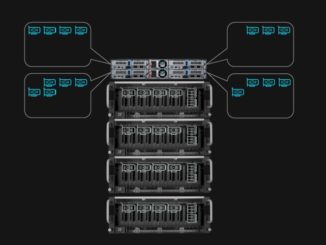
There are many things the U.S. government can do, but innovating at a rapid pace in the ever-evolving world of artificial intelligence is not necessarily one of them.
Much of the work in deep learning hardware and software comes from the private sector, which various government agencies depend upon for their various directives. However, we are in an age of complicated antitrust conversations and unfortunately, many of the companies under the gun for such action are those who supply the feds with much-needed computational and algorithmic know-how and tools.
The Center for Security and Emerging Technology (CSET) issued a detailed brief this month reviewing the role of antitrust action and what it could mean for the Pentagon’s access to AI. Indeed, there are a number of other government entities that could feel the burn if some of the most prolific tech monopolies are divvied up, but the report is narrowly focused on the Pentagon specifically.
We talked with one of the authors of the report, Dakota Foster, a visiting researcher at CSET about the multi-layered question of antitrust, AI, and what governments stand to lose (and what smaller private companies and startups might gain).
One of the most interesting questions in the wake of potential antitrust action against some of the largest tech companies (Google Microsoft, etc.) is around innovation. How might it might stifled and what will the effect be on the agencies that rely on the swift pace of progress on strategically critical technology areas like AI?
“We estimate that antitrust action will likely reduce the net amount and diversity of data held by firms that are broken up and could also reduce firms’ R&D budgets,” Foster says. “However, the effect these losses will have on innovation remains unclear. Similarly, we expect firms’ computing resources to diminish with yet undetermined consequences; shared compute resources could perhaps more than compensate for any loss.”
The R&D problem of any potential antitrust action down the pike would be most keenly felt in R&D, which spurs the innovation of many of the platforms that have tricked into use in hyperscale, HPC, and enterprise settings as open source or simply inspiration. While plenty of work comes out of national lab and developer communities, few things can beat a near-limitless well of R&D funds to innovative and iterate.
Foster and colleagues argue that If “R&D spending drives innovation, firms that can spend more on R&D— presumably large ones—will generally hold an edge in innovation.” They add that a “postbreakup AI sector could be less innovative as a result. Large tech companies do in fact spend more on R&D both in absolute and relative terms. According to PricewaterhouseCoopers, in absolute terms, Amazon and Alphabet were the world’s top two corporate R&D spenders in 2018, with Samsung, Intel, Microsoft and Apple in the top ten.
“The debate over breaking up Big Tech has profound national security implications. The Pentagon maintains that the innovation and acquisition of AI technologies is critical to America’s national security. Defense Secretary Mark Esper recently called AI the most significant emerging technology for warfare, predicting that “whoever masters it first will dominate on the battlefield for many, many, many years.” Although others within and beyond the Pentagon stress the limits of AI, its potential is widely acknowledged. In order to develop and deploy new, strategically decisive AI tools, the Pentagon must rely on an AI innovation ecosystem in which large private-sector companies play a critical role. At the same time, the Department of Justice, the Federal Trade Commission, Congress, and state attorneys general have targeted many of the private sector’s largest and most innovative AI companies in ongoing antitrust probes.” – Dakota Foster, Visiting Researcher, CSET
Our readers are encouraged to peruse the report. It raises as many questions as it answers, several of which go well beyond mere pondering about antitrust action, which has yet to happen. It explores the nature of research and development in the context of company size, available data, ability to compete, and also delves into where companies that hope to have an edge with government AI contracts might need to look.
The full report can be found here.





I don’t think there is much doubt what will happen to innovation–both Bell Labs and IBM serve as historical examples of companies that survived or didn’t survive an antitrust suite.
Seen in another light, fiber to the home at the gigabit speeds is quite rare in America compared to modern countries, e.g. Finland and South Korea, likely due to the way AT&T was broken up many years ago: A bunch of baby monopolies without the resources to innovate and improve infrastructure turned out much worse than a large monopoly.
Could the real problem be officials and legal experts focused on money and national politics with little technical knowledge or understanding of international competition?